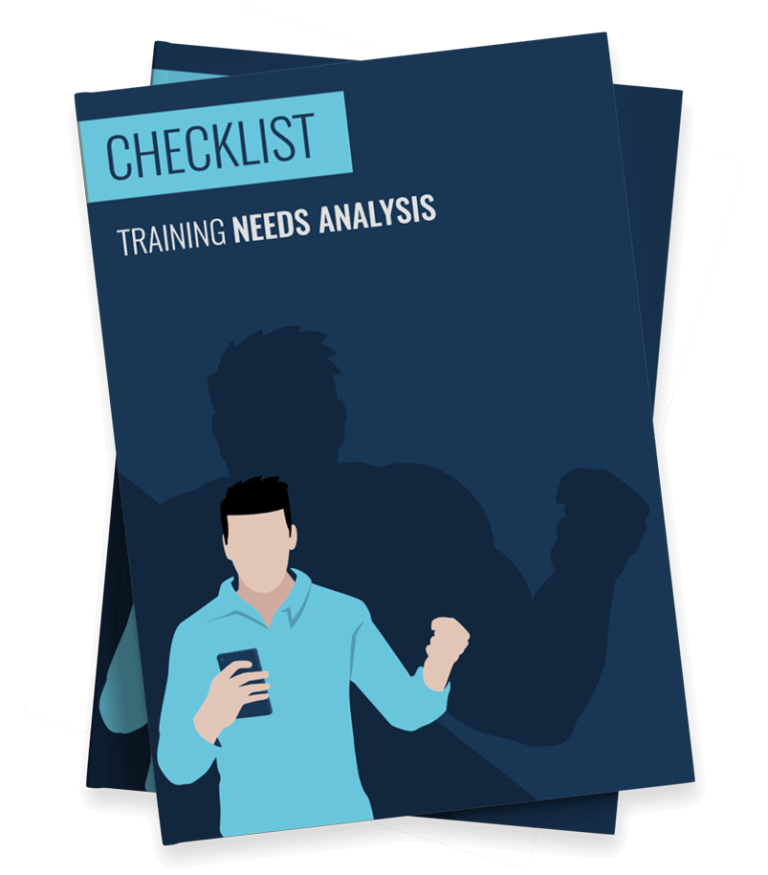
What’s the first word you think of when you hear the phrase ‘compliance training’? If it’s not an expletive, then there’s a good chance it’s a synonym for ‘boring’. For learners themselves, that phrase is likely to send them running for the hills.
But it doesn’t have to be this way.
There are many different types of employee training. For instance, there’s product training, sales training, leadership training and onboarding. Compliance training is arguably the most notorious member of this motley crew.
Regulations, laws and standards don’t sit still — they evolve. Compliance training exists so that the rest of us can keep up. This clear need is the reason why the corporate compliance training market is expected to hit $14.1 billion by 2029 with a CAGR of 11.1%.
Despite this growth, corporate compliance programmes are rife with issues.
- 23% of organisations have no formal compliance training plan.
- 40% of companies rate their compliance programmes as basic or reactive.
- 27% of organisations still report cybersecurity breaches on a weekly basis.
And with no solid plan in place, is it any wonder that 49% of survey respondents confess to not listening to their compliance training in detail? But it’s not all doom and gloom. It is possible to create fun compliance training experiences that engage your learners.
In this article, we’ll explore what compliance training is, its benefits and challenges, and how to successfully roll-out your own programme. Let the regulation revolution begin!
What is Compliance Training?
Compliance training is any training that seeks to educate employees about the laws, regulations, policies and ethical standards that affect their roles and their industry. We can break this down into two further sub-categories:
- Corporate compliance: An organisation’s internal adherence to its own ethical standards and policies.
- Regulatory compliance: Adhering to external laws and regulations imposed by governments or regulatory bodies.
The ultimate goal of compliance training is to ensure that employees understand these rules and guidelines and adjust their conduct accordingly. In this sense, compliance is less about checking boxes and more about ensuring you do things the right way.
Regulatory compliance isn’t optional. It’s an ironclad requirement for your organisation. As a result, your compliance training has to follow suit. This means it’s mandatory for your employees to complete and that you have to provide proof that this has been done.
Examples of Compliance Training
To help further our understanding, let’s explore some common examples of compliance training. It’s highly likely that at least one of these training topics significantly affects your organisation.
Health & Safety: Training is required to ensure employee well-being and prevent accidents and injuries in the workplace. Government bodies like OSHA exist to help ensure workplace safety. This type of training is particularly important in industries with a high level of physical risk, such as manufacturing, construction and transportation.
Cybersecurity: As the speed of digital transformation picks up, your employees need help to stay ahead. Cybersecurity training empowers your workforce to recognise (and thwart) cyber threats, evade phishing attacks and adeptly manage passwords. Embracing security best practice is not only beneficial, but imperative for the well-being of your organisation.
Data Protection: On a similar note, many of your employees will require training relating to data protection and data privacy laws. Regulations such as GDPR in Europe, HIPAA in healthcare and CCPA in California exist to help safeguard sensitive data. Your compliance is essential for maintaining the trust and reputation of your organisation.
Diversity & Inclusion: Your employees deserve a workplace where different cultures, perspectives and backgrounds are valued. Diversity and inclusion training can help you to create this environment. It also means you’re better placed to address discrimination and meet your regulatory requirements (such as equal employment opportunity laws).
Ethical Compliance: When it comes to your business, integrity goes a long way. Ethical compliance training sets out the principles and guidelines that govern organisational behaviour and decision-making. This is your opportunity to outline your organisation’s code of conduct and circumvent any potential conflicts of interest.
Anti-Bribery: Anti-bribery and anti-corruption training are specific types of ethical compliance training. This training helps your employees to understand that bribery and corruption have negative consequences for both the individual and the organisation. This is why laws like the U.S. Foreign Corrupt Practices Act (FCPA) and the UK Bribery Act exist.
Industry Specific: There are also a growing number of industry-specific regulations to keep track of. For instance, those in the finance world have to keep up with anti-money laundering (AML) regulations. Likewise, those in the pharmaceutical space will need to stay on top of FDA regulations for drug approval and quality control.
Acronymed out? Then let’s explore why compliance training is important and how it can be beneficial to your organisation.
Why is Compliance Training Important?

There are real financial consequences for breaching compliance mandates. For instance, Meta was fined $1.3 billion in May 2023 after violating GDPR laws.
Other infamous regulatory infringements include JPMorgan’s spoofing case, Walmart’s FCPA violations and Volkswagen’s emissions scandal. Indeed, if US regulation were a country, it would be the world’s eighth-largest economy.
On the other hand, research from the Association of Corporate Counsel shows that every dollar invested in compliance training decreases fines, damages and settlements by $1.37. That sounds like a worthy investment to us.
But there’s more to compliance training than simply avoiding fines and penalties. We’d sum up the benefits as follows:
- Risk Mitigation: As we’ve seen, compliance breaches can have a big impact on your bottom line. Educating your employees about compliance requirements helps you to reduce your risk, avoid legal issues and protect your organisation from disruption.
- Reputation Management: Your reputation matters. Strong brands take years to build, but can unravel in an instant (take Enron, for example). Thankfully, maintaining compliance enhances your reputation, helps to build trust and fosters goodwill.
- Real World Impact: Regulatory compliance contributes to a fairer playing field for all participants in an industry or market. Without this regulation, competitive balance, market integrity, social responsibility and consumer protection could easily become abstract concepts.
- Employee Well-Being: With all this money talk, it’s easy to forget that compliance training helps to protect your most important asset: your people. After all, the right training helps to improve employee well-being, reduce the number of workplace accidents and prevent harassment.
In other words, compliance training isn’t just about checking boxes. Showing your employees that you care speaks volumes. Indeed, research suggests that kindness in the workplace leads to better business outcomes.
As a result of your compliance training initiatives, you’ll foster a safer and more productive workplace. This is likely to lead to higher levels of employee engagement and reduced absenteeism.
How to Roll-out Compliance Training
Creating, distributing and tracking compliance training is no easy task for L&D teams. It can be time-consuming and costly. It can also be unsatisfying, as the content is decided upon by government and regulatory bodies. This leaves you with limited scope for creativity.
That said, there are opportunities to sprinkle some fun into your compliance training (more on this later). Moreover, the roll-out process itself is fairly simple, if you’re using the right technology.
- Step 1: Determine what legislations and regulations your organisation needs to comply with.
- Step 2: Map your training needs in line with these requirements.
- Step 3: Create or acquire training content in line with your needs.
- Step 4: Share your content with your audience and track their completion status.
Learning technology platforms such as learning management systems and learning apps can help you to get your training content in front of your audience. You can then set due dates, track their progress and send reminders as necessary.
You can also use digital certificates to record each employee’s compliance status and automate the re-enrollment process at preset intervals. This reduces the risk of human error and frees up your L&D team to focus on more pressing tasks.
The Challenges of Compliance Training
Let’s face it. Compliance training doesn’t have a great reputation. Indeed, it’s seen as both dull and ineffective, which isn’t a great combination. According to a Elucidat survey, the most common word used to describe compliance training is ‘boring’.

There are good reasons for this. Compliance training topics aren’t particularly sexy. They often involve intricate legal and regulatory details that can seem irrelevant to an employee’s day-to-day role. This makes it yawn-inducing and challenging to digest.
And let’s not forget, people don’t like perceived threats to their freedom (‘psychological reactance’) or being told what to do. Obligation holds significantly less motivational power than genuine interest.
As for the level of effectiveness? Well, there’s challenges there too. According to Gartner, ‘Many compliance leaders are dissatisfied with the effectiveness of their existing [compliance] program activities. Existing training activities are not meeting key risk mitigation objectives, and there is evidence that embedded controls are more effective.’
In other words, it’s often easier to completely change or automate an organisational process or mechanism than it is to roll-out effective compliance training. Yikes.
In fact, Gartner predicts a 50% reduction in annual compliance training by 2025, as more embedded controls are introduced.
How to Make Compliance Training Fun
Despite all these challenges, compliance training isn’t going anywhere. After all, it’s crucial for mitigating risks, maintaining legal compliance and promoting ethical behaviour. What’s more, many of these challenges can be overcome.
Here at Growth Engineering, we focus on creating online learning solutions that engage and delight. With this in mind, here are our six top tips for creating enjoyable compliance training experiences.
- Gamification: Game mechanics such as Badges, XP and Leaderboards act as virtual incentives within your learning environment. This can help to make compliance training more interactive and competitive. Before you know it, your learners will be racing to the top of the cybersecurity leaderboard.
- Multimedia: Compliance training topics are boring. Reams of text are boring. So, whatever you do, don’t combine these two things. Use a multi-format approach to drive interest. Diagrams, infographics, audio and interactive assets can be effective. We’d particularly recommend utilising eLearning and video content.
- Microlearning: As we’ve seen, compliance training topics aren’t always easy to digest. As such, break your topics down into focused modules that can be completed in bite-sized chunks. This will avoid overly taxing your learners. Microlearning best practice suggests that each module should be between 3-8 minutes long.
- Scenario-Based Learning: Empower your learners to take an active role in their learning journey. Present them with real-world scenarios, compliance dilemmas and difficult decisions. Witnessing the impact of their choices can transform compliance training into a relatable and engaging experience.
- Social Learning: Learning’s better when we do it together. Encouraging group discussions, collaboration and peer-to-peer learning helps to facilitate effective knowledge sharing. As a result, your compliance training programme will live on long after your formal training programme has come to an end.
- Narrative: Who doesn’t love a good story? Delivering information in narrative format helps to make your training more relatable. Take a compliance challenge, create characters that resonate with your audience and build a memorable storyline. If you can make your content emotionally evocative then engagement is sure to follow.
The tips above will help you to create a fun learning environment. But there’s always more you can do to increase your engagement levels.
For instance, ensure you’ve clearly stated the WIIFM for your learners, scheduled regular reminders and made your content easily accessible to all. And don’t forget to lead by example and engage with users within your learning environment.
Implementing all these steps will have a tangible impact on your training programme and your organisation as a whole. We’ve included a case study below, so you can start to visualise the possibilities.
Case Study: Sainsbury’s
There is an abundance of compliance training success stories to explore. Take Sainsbury’s, a major British supermarket chain, for example.
In response to findings from an external audit that highlighted the need for a fresh approach to health and safety in-store, they devised an engagement-focused compliance training programme. The results speak for themselves:

- 17% reduction in absenteeism.
- 28% reduction in reportable incidents.
This alone would have had a meaningful impact on Sainsbury’s bottom line. But there’s more. Survey results also demonstrated improved employee morale and pride in working for the company. Now that’s a real win.
Final Word
Congratulations, you’ve made it to the end of our article on compliance training. Your certificate is en route to your address. And remember, to maintain your compliance status, it’s essential to revisit this article next year!
Compliance training may have a reputation for being stultifyingly dull (often with good reason), but it’s here to stay. After all, there’s no denying its essential role in maintaining legal adherence, ethical standards and a strong organisational culture.
Thankfully, you don’t have to resign yourself to creating uninspiring training experiences. There are steps you can take to transform compliance training from a chore into an opportunity for growth. It’s time to find your fun factor.
Thank you for reading. Compliance training is a common learning technology use case. But there are many more. Establish your training needs with our interactive ‘Training Needs Analysis Checklist‘.









